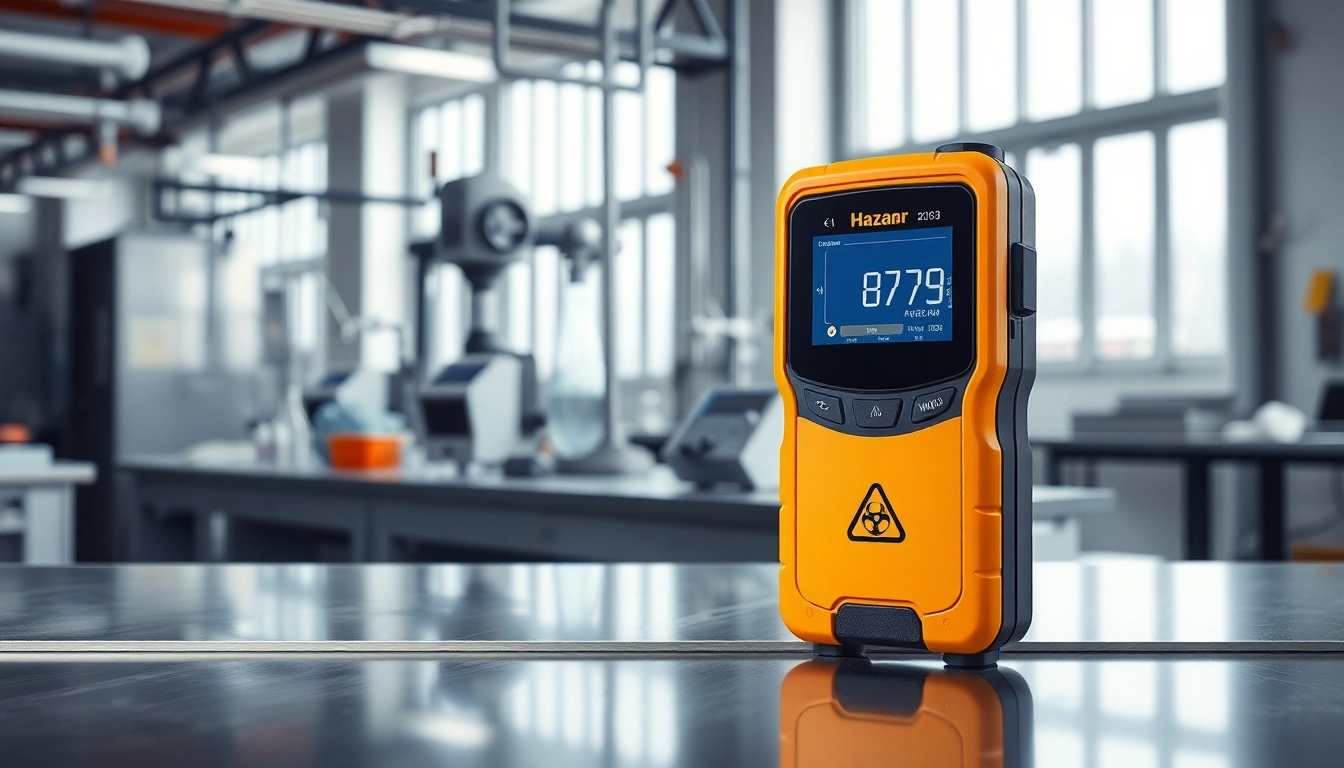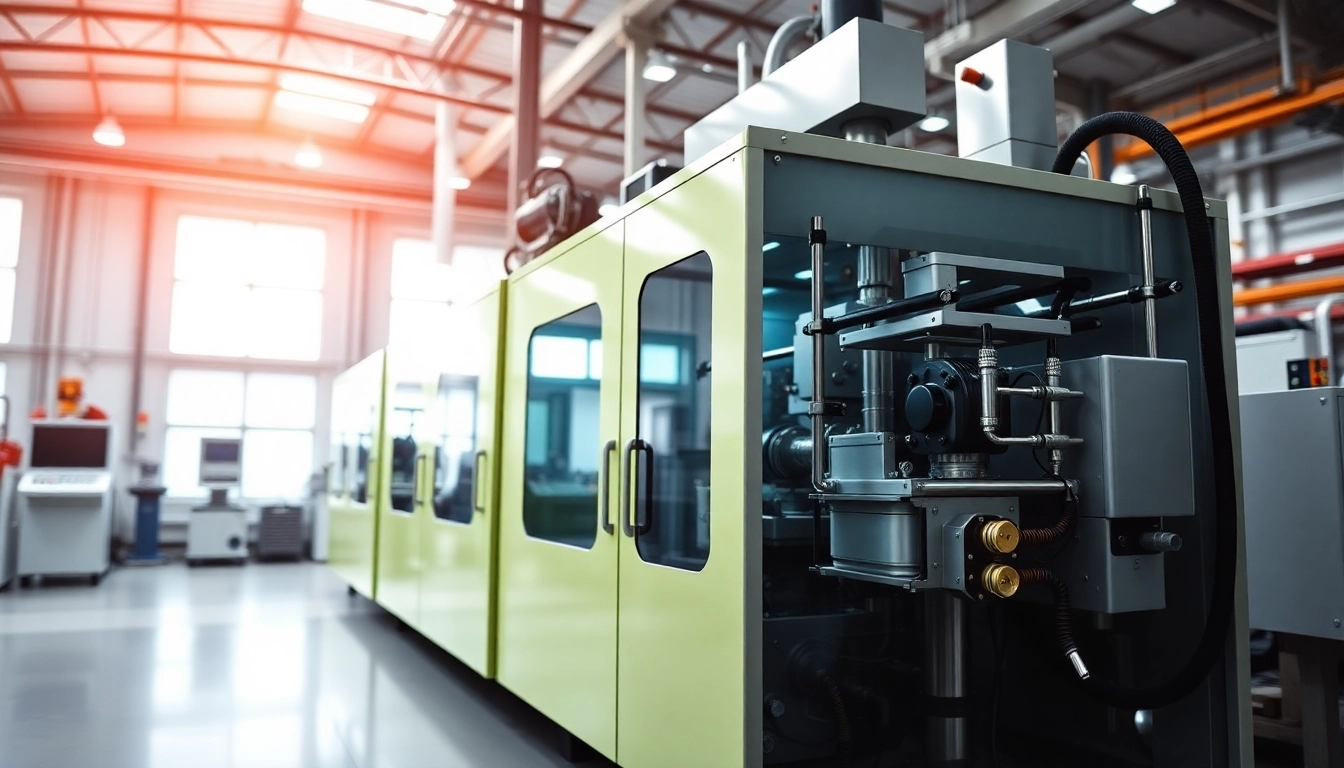Understanding Hydrogen Chloride and Its Risks
What is Hydrogen Chloride?
Hydrogen Chloride (HCl) is a colorless gas at room temperature, characterized by its pungent, irritating odor. When dissolved in water, it forms hydrochloric acid, an important chemical used in various industrial processes. It is produced through the combustion of chlorine and hydrogen or by the reaction of hydrochloric acid with certain metals. Due to its wide usage, it is essential to have reliable Hydrogen Chloride gas detectors to ensure safety and compliance with health regulations.
Health Risks Associated with Hydrogen Chloride Exposure
Exposure to hydrogen chloride can pose significant health risks, especially in poorly ventilated areas. Inhalation may lead to respiratory irritation, coughing, and shortness of breath, while higher concentrations can cause severe damage to the respiratory tract. Skin and eye contact can result in burns and irritation, making personal protective equipment essential for those working with or near this gas. Long-term exposure may lead to chronic respiratory ailments and other serious health issues.
Industry Applications of Hydrogen Chloride
Hydrogen chloride is utilized in multiple industries, including manufacturing plastics, fertilizers, and dyes. It also plays a critical role in oil refining processes and water treatment. Additionally, it is used in cleaning agents and food processing. The versatility of HCl underscores the need for effective gas detection and safety precautions to protect workers and the environment from its harmful effects.
Types of Hydrogen Chloride Gas Detectors
Fixed vs. Portable Detectors
Hydrogen chloride gas detectors can be classified into two main types: fixed and portable detectors. Fixed detectors are installed in specific locations, providing continuous monitoring in critical areas of industrial plants. They are often connected to alarms and control systems that can immediately alert staff to dangerous concentrations. On the other hand, portable detectors are designed for personal use and offer flexibility for workers who may move between locations. They are crucial for conducting safety inspections and monitoring HCl exposure in varying environments.
Detector Technologies Explained
Various technologies are applied in hydrogen chloride gas detection, including electrochemical sensors, infrared sensors, and metal oxide semiconductors. Electrochemical sensors work by detecting gas concentration through electrochemical reactions, providing accurate measurements suitable for low-level monitoring. Infrared sensors utilize infrared light absorption properties of gases, allowing for non-contact and continuous monitoring. Metal oxide semiconductors react chemically with gas molecules, changing their electrical resistivity. Each technology has its advantages, and the choice depends on specific application requirements.
Choosing the Right Detector for Your Needs
Selecting the appropriate hydrogen chloride gas detector requires considering factors such as the detection range, environment, and response time. A thorough assessment of the workplace environment and the specific hazards present can help in choosing the right type of detector. It’s also beneficial to evaluate whether fixed or portable options would be more effective for your operational context. Additionally, understanding local regulations and industry standards can steer the decision-making process towards a suitable solution.
How to Properly Use a Hydrogen Chloride Gas Detector
Installation Best Practices
Proper installation of hydrogen chloride gas detectors is essential to maximize effectiveness. Fixed detectors should be positioned at locations where gas accumulation is likely, such as near valves, drains, or confined spaces. Proper mounting height and angle can also enhance detection efficiency while ensuring easy access for maintenance. Portable detectors should be carried in a secure manner and used in accordance with manufacturer guidelines to ensure accurate readings.
Calibration and Maintenance Guidelines
Calibration is a crucial aspect of ensuring that gas detectors provide accurate readings. Regular calibration in accordance with the manufacturer’s specifications will ensure that the detectors function correctly. Maintenance practices should include routine checks of battery life, sensor functionality, and physical condition. A well-documented maintenance log helps tracking of procedures and schedules, facilitating compliance with safety regulations.
Regular Safety Checks and Protocols
Implementing regular safety checks is imperative for the optimal performance of hydrogen chloride gas detectors. Establishing protocols for daily checks, including visual inspections and functionality tests, can identify issues before they escalate. Training workers on how to respond to alarms and recognizing early warning signs of gas leaks further ensures a safer working environment. Documented emergency response plans that include actions for HCl exposure situations are critical to workplace safety.
Key Features to Consider When Selecting a Detector
Sensor Sensitivity and Detection Limits
When selecting a hydrogen chloride gas detector, sensitivity and detection limits are paramount features to evaluate. Accurate sensors can detect low concentrations of HCl, allowing for early intervention and reduced risk of harm. Understanding the specific levels that need to be monitored helps in choosing a detector that meets safety requirements and operational needs.
Response Time and Accuracy
The response time of a gas detector is critical in preventing adverse effects from HCl exposure. A fast response time ensures that alerts are generated quickly, allowing for timely action to mitigate risks. Likewise, accuracy in detecting gas concentrations contributes significantly to maintaining safety standards and protecting personnel. Technology advancements have improved the accuracy and reliability of gas detectors, making thorough research and evaluation necessary before purchase.
User Interface and Data Integration
An intuitive user interface enhances the usability of hydrogen chloride gas detectors, enabling quicker comprehension of readings and ease of navigation through device settings. Many modern detectors feature data integration capabilities that allow for seamless connection with monitoring systems or central databases. This integration supports enhanced data analysis and comprehensive reporting, crucial for maintaining regulatory compliance and operational efficiency.
Future Trends in Gas Detection Technology
Advancements in Detection Methods
The gas detection industry is experiencing rapid advancements, resulting in more sophisticated methodologies for detecting hazardous gases like hydrogen chloride. Innovations in nanotechnology are leading to the development of highly sensitive sensors that can detect HCl at much lower concentrations than traditional technologies. These advancements promise to improve monitoring accuracy and response times significantly, fostering a safer working environment.
Integration with Smart Systems
The integration of gas detection systems with smart technology is another trend shaping the future of workplace safety. IoT (Internet of Things) connectivity allows for real-time data sharing, remote monitoring, and alerts to be sent directly to personnel’s mobile devices. This capability not only enhances monitoring efficiency but also improves overall incident response times. Facilities can increasingly rely on connected systems to streamline operations while ensuring high safety standards.
The Role of AI in Enhancing Safety Solutions
Artificial Intelligence (AI) is revolutionizing safety solutions across various industries, including gas detection. By harnessing machine learning algorithms, advanced analytics can predict potential leakage scenarios or anomaly detection. Predictive maintenance triggered by AI capabilities can also minimize downtime and ensure that detectors are functioning optimally. The future of gas detection technology is thus likely to involve significant AI integration, ensuring heightened safety and operational efficiency.



